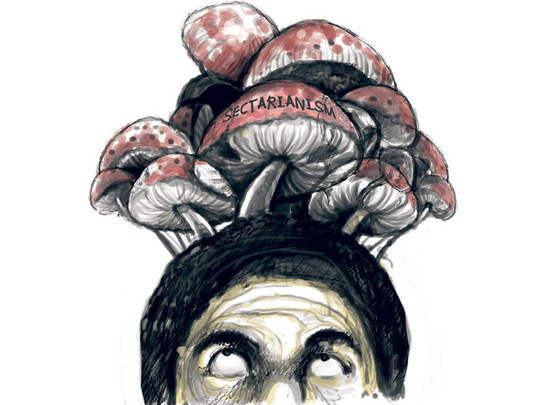
It has been 65 years since the creation of the Arab League. Despite all the changes that have taken place in the world and in Arab countries, the League's structure and inter-Arab relations remain unchanged.
Supposedly, the League should have, since its establishment in March 1945, been formed in a way that meets the minimum aspirations of the Arab people. Yet regional and international developments over the past decades clearly show that the League has achieved a limited form of Arab cooperation.
Even worse, some have called for scrapping the League and replacing it with a Middle Eastern bloc, which includes Israel and non-Arab countries. Such a proposal is clearly aimed at downplaying the Arab identity when it comes to regional cooperation.
It is true that the Arab League represents the will of various regimes and conflicting interests. Yet, this experience can be developed into a better form, similar to the European experiment, which developed from a common market into an integrated European Union.
It is sad that the European experience coincided with the establishment of the Arab League in the mid-1940s. Sadder still is the fact that although these countries do not have a common culture or language, they succeeded in forming an integrated union, and aim at achieving the highest levels of cooperation.
On the Arab side, the scene seems pessimistic as cooperation between Arab countries is more like a currency exchange rate index, which at times rises to reach the level of merger between some countries and sometimes falls to reach the state of division between people.
This division even turns into armed conflict on borders.
The EU, however, was based on common interests and economic cooperation.The experience was also based on a host of elements and conditions, the most important of which were non-interference in another country's internal affairs, respecting the will of the people and the harmony between governments in terms of the democratic political structure and the prevailing economic and social characteristics.
The present status of the Arab League will remain unchanged since the League is a union of governments, not of countries in accordance with the concept of state.
Presently in these countries, there is a lack of public participation in making national decisions, and some Arab societies are still tribal as a result of the prevailing political systems.
Mired in conflict
The Arab world is a region of international conflict and its present national boundaries were drawn after agreements and settlements concluded by Europeans in the beginning of the last century.
It is also true that the Arab nation is suffering because of a foreign Zionist body, which has depleted its potential over the past decades.
Neither the national security of an Arab country nor comprehensive Arab development can be achieved without the integration of Arab resources and capabilities that have been depleted by foreign companies, and sometimes by foreign countries.
Undoubtedly, integration of countries demands a competent political system. This is simply because the right constitutional structure forms the basis of integration between countries.
This was the case when the US introduced its first constitution two centuries ago as the sole reference for both the people and the authority in 13 states. This integrated constitutional experience developed over the past two decades to include 50 states and to become the world's largest economic, political and military force.
Improving inter-Arab relations requires the development of ruling regimes in Arab countries. It also calls for the restoration of the status of pan-Arabism in the Arab world.
Undoubtedly, correcting the constitutional status in each Arab country is the only way to build better inter-Arab relations. But the problem now is not only the absence of a genuine democratic set-up, but also the weakness of the common Arab identity, and sectarianism in Arab societies.
This is an indication of the potential internal turmoil in each Arab country. Hence, Arabism will not only be a solution to the crisis of inter-Arab relations, but a cultural and social shield to protect national units in each Arab country.
This raises a big question: What is the reason for this Arab confusion over the identity issue? And why do Arabs look for conflicting and numerous loyalties without any justification?
In fact, belonging to the Islamic faith or to Islamic civilisation is not contradictory to Arab cultural identity or the numerous national affiliations across the Arab nation.
Now, the problem does not lie with how the tripartite loyalty of religion, nationalism and patriotism can be viewed, but with the disintegration within Arab nations and the increase in sectarian and ethnic divisions.
Sectarian and ethnic struggles threaten to turn into devastating Arab civil wars that will only benefit regional and foreign powers.
A return to Arabism is necessary to fortify societies from within and immunise them against foreign domination, as well as to lay the proper foundation for common and effective Arab cooperation in the future.
The desired Arabism is a call to return to the origins of this great nation and its civilisation and cultural role that rejects fanaticism and racism.
Without Arabism that brings Arabs together, there will never be a real Arab League nor one Arab nation.
Sobhi Ghandour is head of the Al Hewar Centre in Washington, D.C.












